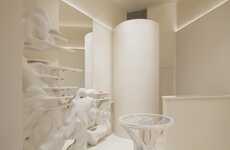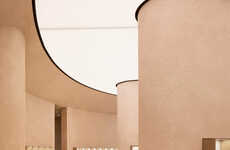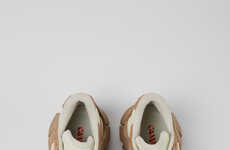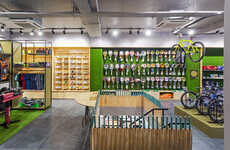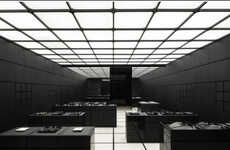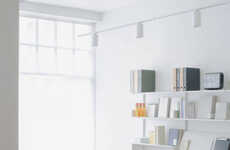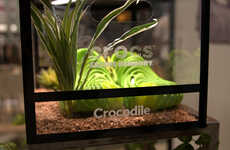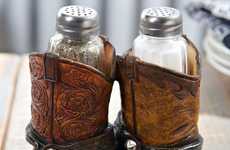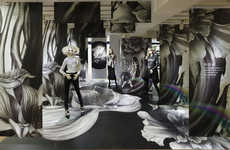
The New York Camper Shoe Store is Full of Surprises
Shiori Mine — May 24, 2012 — Art & Design
References: shigerubanarchitects & dezeen
The New York Camper shoe store, designed by architects Shigeru Ban and Dean Maltz, is perplexing when you first walk in. The puzzling design is brashly branded with the company's red and white logo integrated onto the hidden shoe displays.
Although some designers choose to display their goods frontline and center, this high-end retailer takes on a more subtle approach. Using a system of childlike cubbyholes, the store ensures shoppers encounter the objects of their desire after a bit of effort. The whimsical and graphical theme continues onto the cash register, which has been decked out in astroturf. The cleverly used cardboard-like tubes on the rooftop provide the illusion of an exposed rustic attic.
The New York Camper shoe store is a cunning design that draws curious consumers into its vibrant shop.
Although some designers choose to display their goods frontline and center, this high-end retailer takes on a more subtle approach. Using a system of childlike cubbyholes, the store ensures shoppers encounter the objects of their desire after a bit of effort. The whimsical and graphical theme continues onto the cash register, which has been decked out in astroturf. The cleverly used cardboard-like tubes on the rooftop provide the illusion of an exposed rustic attic.
The New York Camper shoe store is a cunning design that draws curious consumers into its vibrant shop.
Trend Themes
1. Subtle Retail - Creating a more subtle, playful approach to displaying retail goods can draw consumers and create a unique shopping experience.
2. Hidden Displays - Using hidden or stealthily shelved displays can create a sense of intrigue and discovery for shoppers.
3. Whimsical Design - Employing a whimsical and graphical themed design throughout a retail space can add a touch of playfulness and charm.
Industry Implications
1. Fashion Retail - The fashion retail industry can benefit from employing whimsical and subtle designs to enhance the shopping experience and draw in customers.
2. Interior Design - Interior designers can look to the use of hidden or stealthily shelved displays as a design element to create a sense of intrigue and discovery within a space.
3. Branding - Brand designers can consider the integration of logos into subtle design features of a retail space to create a strong brand presence without sacrificing a unique and playful environment.
6.3
Score
Popularity
Activity
Freshness


